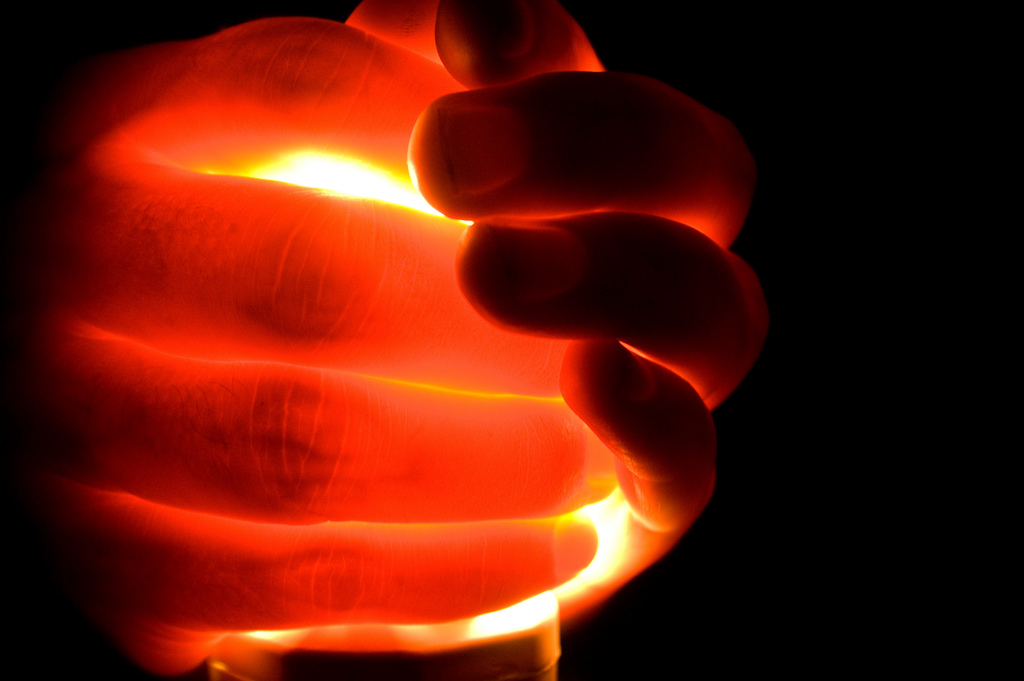
Light Therapy
Light is one of the most fundamental elements in our environment and as such it affects us profoundly and on many levels. The rhythmic variation of light intensity conveys to our bodies the cycles of day and night and of the seasons through the year. Our bodies are designed to orient themselves by these rhythmic cycles, but the problem is, our modern light environment is very different to a natural one in a number of ways:
Intensity and duration
Most people, especially in urban environments, spend very little time outdoors and in sunlight. Even though indoor areas are usually artificially lit, indoor light is much less bright than sunlight (500 lux at a typical desk vs. 110 000 lux in bright sunlight).
Frequency spectrum
Besides the intensity being different between natural and artificial light, the spectrum is also much different (meaning the “colour” distribution of the light is different).
Variation in intensity
In our modern environment, the relative difference between day and night light exposure is smaller than that of a natural environment. This is due to both the day intensity being lower and the night intensity being higher.
Rhythmicity
Our modern light exposure patterns lack the rhythmicity which is characteristic of a natural light environment. For example, our daily light exposure patterns are often different during the week versus over weekends or during holidays. Because of artificial light, our waking hours also don’t overlap with daylight hours as much as they used to in earlier times. We often work late into the night when deadlines loom and frequently travel through time zones. Many of us stare at electronic displays before bedtime. All these things serve to disrupt the natural rhythms of light and dark.
Because of these unnatural characteristics of our modern light environment, our bodies struggle to maintain strong and synchronised circadian rhythms. This represents a constant stress on our bodies and contributes to all sorts of dysfunctions that are rife in our society like insomnia and poor sleep quality, depression, anxiety, fatigue, poor concentration and learning, brain degeneration, premature aging, obesity, diabetes, heart disease, cancer, emotional instability, poor memory, immune system disruption and the list goes on and on.
All of that sounds quite gloomy, but don’t despair – these are a few practical ways in which most of us can dramatically improve our light environment:
- Try to spend at least 20 min in bright sunlight every day with as much of your skin exposed as possible. It’s never good to burn though, so slowly increase your sunlight exposure. Don’t habitually wear sunglasses during this time.
- Try to get bright light exposure as early in the day as possible. In gloomy wintertime, this can be achieved with bright incandescent, LED or halogen bulbs. This helps to anchor your circadian clock – it’s a clear signal to your body that “it’s day now.”
- Illuminate your working area with bright incandescent or halogen lights. A total of 500 W of light is often recommended, though this might take a while to get used to.
- Decide on a curfew for screen time – e.g. no TV, laptop, iPad or phone usage after 9 pm. Also, install blue-blocking apps on your screens that activate after dark and wear blue-blocking glasses if you are particularly sensitive to the disrupting influence of blue light.
Light does more than just influence our circadian rhythms, though. It has profound direct and indirect physiologic effects on our cells. One of the most fundamental of these is the effect of red and infrared light on the respiratory machinery in our cells. Red and infrared light has the ability to restore the function of the cytochrome oxidase enzymes in our cells that are intimately involved in the ability of our cells to generate energy.
Because energy is required for cells to perform all their functions and to maintain their structure, improving the availability of energy has an incredibly profound influence on the wellbeing and functioning of cells and hence an organism. This is evidenced by the wide range of conditions for which red and infrared light has been found to be therapeutic, which includes everything from bedsores to tendonitis, hair loss, acne and various other skin conditions, macular degeneration, bone fractures, joint disorders, frozen shoulder, tennis elbow, thyroid issues, burns, back pain, muscle pain, osteoarthritis and rheumatoid arthritis, scars, skin aging, stroke, temporomandibular joint disorders (TMJ), wound healing and many, many others. It seems like there isn’t a condition for which red and infrared light is not dramatically helpful.
At The Good Life Holistic Health we make extensive use of red and infrared light because it is such a safe and useful treatment modality which yields such dramatic results.
Light Therapy
Light is one of the most fundamental elements in our environment and as such it affects us profoundly and on many levels. The rhythmic variation of light intensity conveys to our bodies the cycles of day and night and of the seasons through the year. Our bodies are designed to orient themselves by these rhythmic cycles, but the problem is, our modern light environment is very different to a natural one in a number of ways:
Intensity and duration
Most people, especially in urban environments, spend very little time outdoors and in sunlight. Even though indoor areas are usually artificially lit, indoor light is much less bright than sunlight (500 lux at a typical desk vs. 110 000 lux in bright sunlight).
Frequency spectrum
Besides the intensity being different between natural and artificial light, the spectrum is also much different (meaning the “colour” distribution of the light is different).
Variation in intensity
In our modern environment, the relative difference between day and night light exposure is smaller than that of a natural environment. This is due to both the day intensity being lower and the night intensity being higher.
Rhythmicity
Our modern light exposure patterns lack the rhythmicity which is characteristic of a natural light environment. For example, our daily light exposure patterns are often different during the week versus over weekends or during holidays. Because of artificial light, our waking hours also don’t overlap with daylight hours as much as they used to in earlier times. We often work late into the night when deadlines loom and frequently travel through time zones. Many of us stare at electronic displays before bedtime. All these things serve to disrupt the natural rhythms of light and dark.
Because of these unnatural characteristics of our modern light environment, our bodies struggle to maintain strong and synchronised circadian rhythms. This represents a constant stress on our bodies and contributes to all sorts of dysfunctions that are rife in our society like insomnia and poor sleep quality, depression, anxiety, fatigue, poor concentration and learning, brain degeneration, premature aging, obesity, diabetes, heart disease, cancer, emotional instability, poor memory, immune system disruption and the list goes on and on.
All of that sounds quite gloomy, but don’t despair – these are a few practical ways in which most of us can dramatically improve our light environment:
- Try to spend at least 20 min in bright sunlight every day with as much of your skin exposed as possible. It’s never good to burn though, so slowly increase your sunlight exposure. Don’t habitually wear sunglasses during this time.
- Try to get bright light exposure as early in the day as possible. In gloomy wintertime, this can be achieved with bright incandescent, LED or halogen bulbs. This helps to anchor your circadian clock – it’s a clear signal to your body that “it’s day now.”
- Illuminate your working area with bright incandescent or halogen lights. A total of 500 W of light is often recommended, though this might take a while to get used to.
- Decide on a curfew for screen time – e.g. no TV, laptop, iPad or phone usage after 9 pm. Also, install blue-blocking apps on your screens that activate after dark and wear blue-blocking glasses if you are particularly sensitive to the disrupting influence of blue light.
Light does more than just influence our circadian rhythms, though. It has profound direct and indirect physiologic effects on our cells. One of the most fundamental of these is the effect of red and infrared light on the respiratory machinery in our cells. Red and infrared light has the ability to restore the function of the cytochrome oxidase enzymes in our cells that are intimately involved in the ability of our cells to generate energy.
Because energy is required for cells to perform all their functions and to maintain their structure, improving the availability of energy has an incredibly profound influence on the wellbeing and functioning of cells and hence an organism. This is evidenced by the wide range of conditions for which red and infrared light has been found to be therapeutic, which includes everything from bedsores to tendonitis, hair loss, acne and various other skin conditions, macular degeneration, bone fractures, joint disorders, frozen shoulder, tennis elbow, thyroid issues, burns, back pain, muscle pain, osteoarthritis and rheumatoid arthritis, scars, skin aging, stroke, temporomandibular joint disorders (TMJ), wound healing and many, many others. It seems like there isn’t a condition for which red and infrared light is not dramatically helpful.
At The Good Life Holistic Health we make extensive use of red and infrared light because it is such a safe and useful treatment modality which yields such dramatic results.

